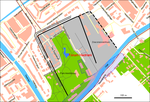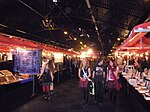Paul van Waarden (restaurant)
Defunct restaurants in the NetherlandsMichelin Guide starred restaurants in the NetherlandsRestaurant stubsRestaurants in RijswijkUse British English from January 2013

Paul van Waarden is a defunct restaurant in Rijswijk, Netherlands. It is a fine dining restaurant that was awarded one Michelin star in 2002 and retained that rating until 2012. The loss of the Michelin star for 2013 was a real shock for the restaurant and they requested a discussion with Michelin. The restaurant closed due to a bankruptcy.For 2013, GaultMillau awarded the restaurant 13 out of 20 points.Head chef of Paul van Waarden was Paul van Waarden.Originally, the restaurant was located in Wassenaar and traded under the name De keuken van Waarden. In 2001, the restaurant moved to Rijswijk and changed its name.
Excerpt from the Wikipedia article Paul van Waarden (restaurant) (License: CC BY-SA 3.0, Authors, Images).Paul van Waarden (restaurant)
Tollensstraat,
Geographical coordinates (GPS) Address Phone number Website Nearby Places Show on map
Geographical coordinates (GPS)
| Latitude | Longitude |
|---|---|
| N 52.056316666667 ° | E 4.3344333333333 ° |
Address
Maximo Trattoria Italiana
Tollensstraat 10
2282 BM
South Holland, Netherlands
Open on Google Maps








